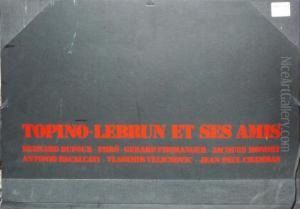Francois J. Topino-Lebrun Paintings
François-Joseph Topino-Lebrun was a French painter and draughtsman born on October 4, 1764, in Marseille, France. Not widely known outside of art historical circles, Topino-Lebrun's life was marked by his involvement in the turbulent political climate of his time, which ultimately led to his early demise.
Topino-Lebrun traveled to Paris to further his art education and became a student of the famous Jacques-Louis David, the leading French painter in the neoclassical style. Under David's guidance, Topino-Lebrun honed his skills and was influenced by the neoclassical aesthetic, characterized by an emphasis on simplicity and a return to the classical virtues of harmony, clarity, and restraint.
However, Topino-Lebrun's career was overshadowed by his political activities. He was an ardent supporter of the French Revolution and a member of the Jacobin Club, a radical political organization that played a significant role during the Revolution. His political leanings were reflected in some of his works which include themes of liberty and republicanism.
The artist was implicated in the assassination plot against Napoleon Bonaparte, known as the Conspiracy of the Equals, led by Gracchus Babeuf. Topino-Lebrun, along with other conspirators, was arrested in 1796. He was initially acquitted but was later rearrested and condemned to death. This connection to the conspiracy ultimately led to his execution by guillotine in 1801.
Despite his political engagement, Topino-Lebrun's artistic output included not only historical and revolutionary subjects but also religious paintings, portraits, and landscapes. His style, though influenced by his teacher David, also showed his own sensitivity to color and a certain expressiveness in his figures.
Topino-Lebrun's legacy in art history is modest due to his brief career and the overshadowing of his political activities. However, his work does provide insight into the world of French neoclassical painting and the nexus of art and politics during a time of great upheaval in French history. His life story is a poignant example of the often tragic intersection of artistic endeavor and revolutionary fervor.
